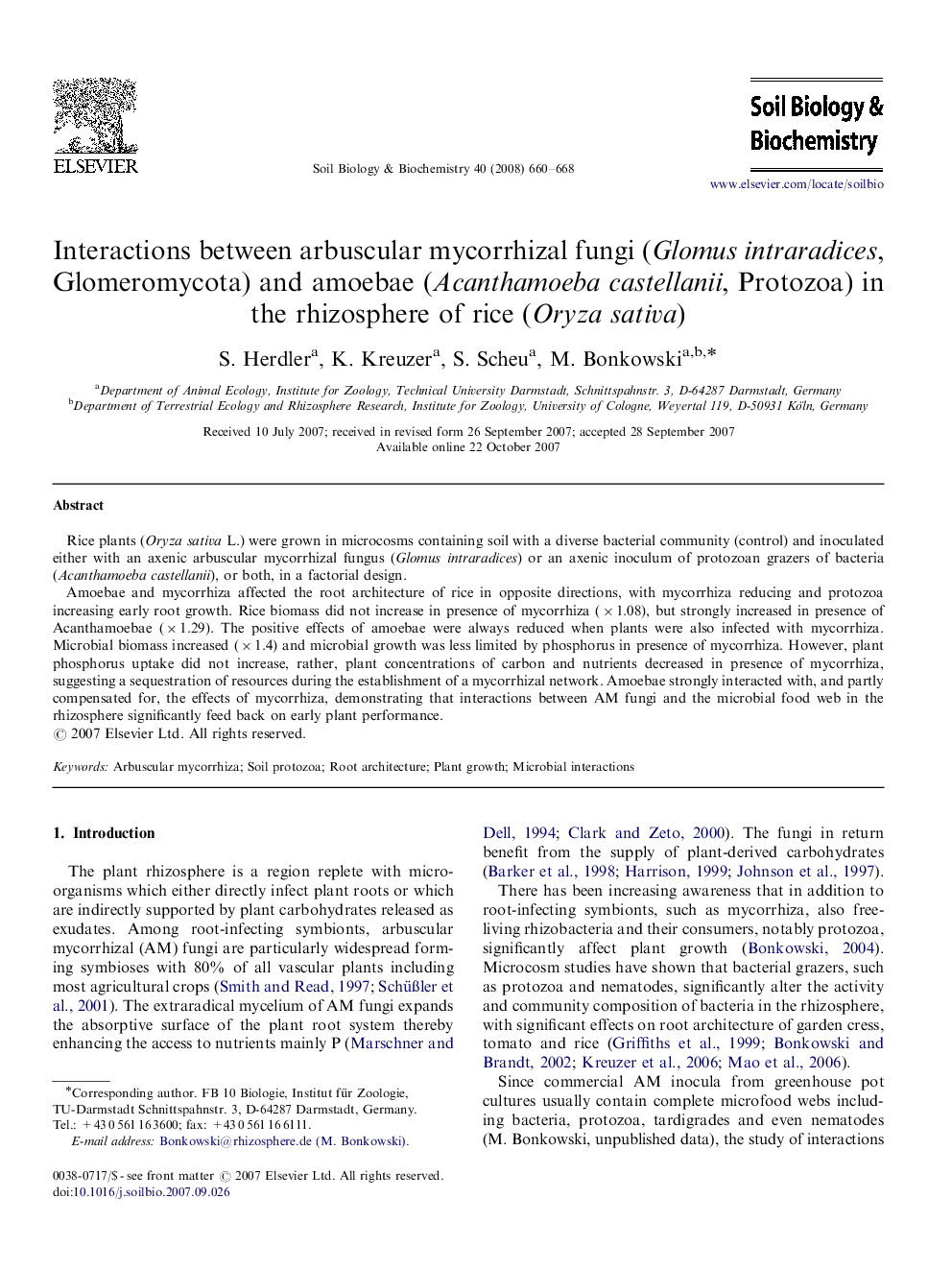| Article ID | Journal | Published Year | Pages | File Type |
|---|---|---|---|---|
| 2026992 | Soil Biology and Biochemistry | 2008 | 9 Pages |
Rice plants (Oryza sativa L.) were grown in microcosms containing soil with a diverse bacterial community (control) and inoculated either with an axenic arbuscular mycorrhizal fungus (Glomus intraradices) or an axenic inoculum of protozoan grazers of bacteria (Acanthamoeba castellanii), or both, in a factorial design.Amoebae and mycorrhiza affected the root architecture of rice in opposite directions, with mycorrhiza reducing and protozoa increasing early root growth. Rice biomass did not increase in presence of mycorrhiza (×1.08), but strongly increased in presence of Acanthamoebae (×1.29). The positive effects of amoebae were always reduced when plants were also infected with mycorrhiza. Microbial biomass increased (×1.4) and microbial growth was less limited by phosphorus in presence of mycorrhiza. However, plant phosphorus uptake did not increase, rather, plant concentrations of carbon and nutrients decreased in presence of mycorrhiza, suggesting a sequestration of resources during the establishment of a mycorrhizal network. Amoebae strongly interacted with, and partly compensated for, the effects of mycorrhiza, demonstrating that interactions between AM fungi and the microbial food web in the rhizosphere significantly feed back on early plant performance.
